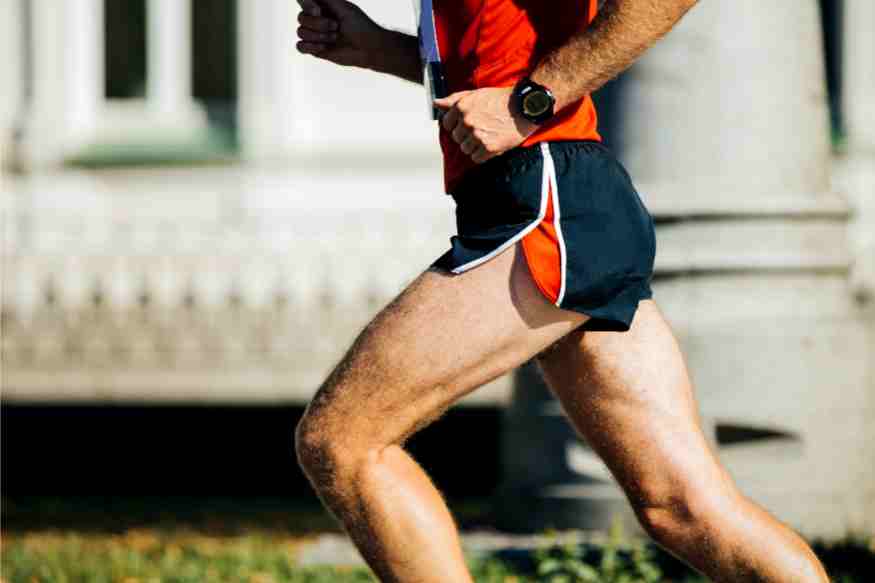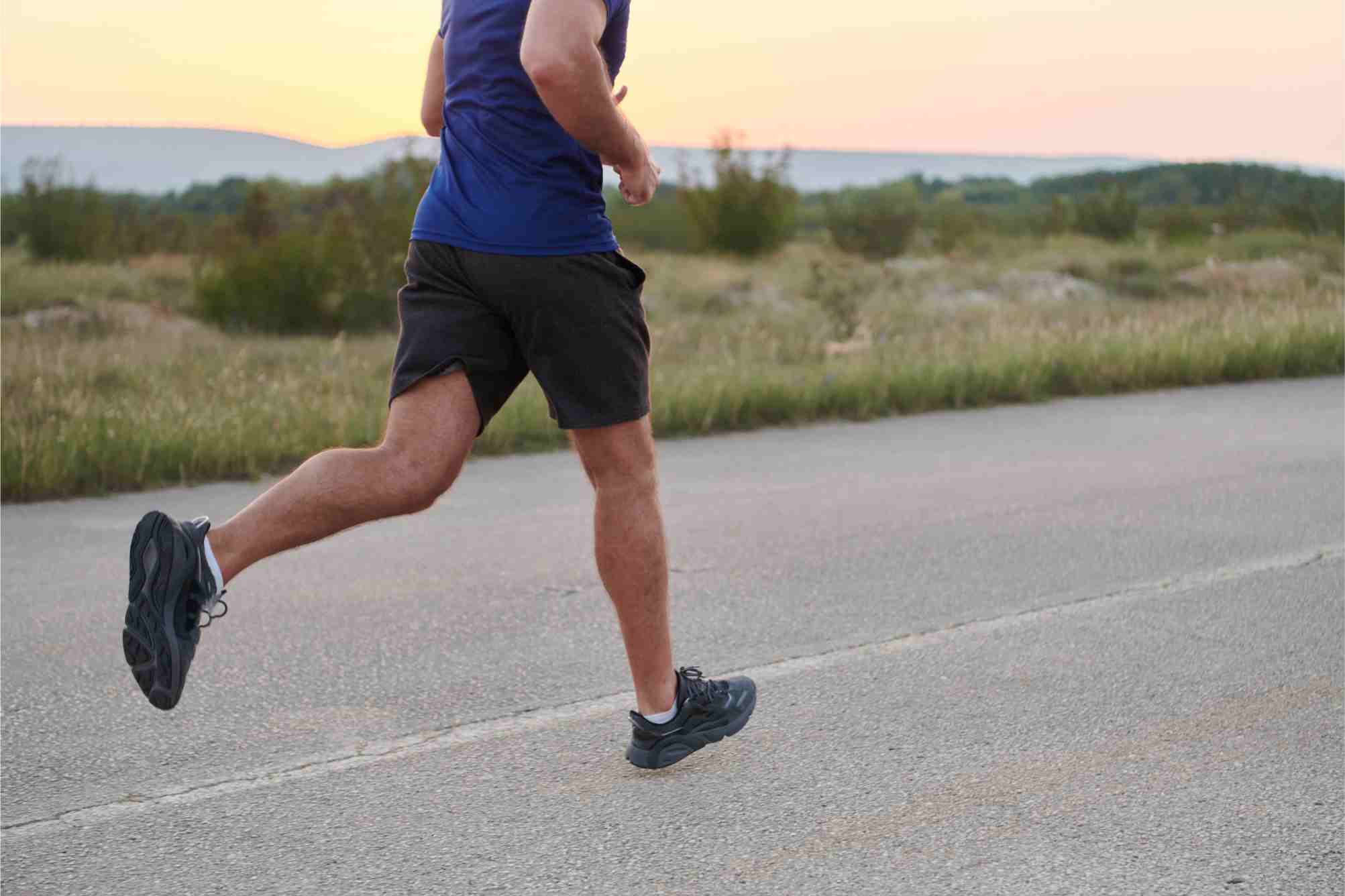Difference Between Jogging vs Walking & Which One is Better?

We often make New Year’s resolutions to get slim and end up in gyms, stressing and overworking ourselves. However, we often fail to understand that weight loss and fitness are journeys, and we need to work on them regularly to derive maximum results. A good way to begin your fitness journey is by walking or jogging.
If you want to know which is best for you when searching for “jogging vs. walking,” continue reading.

Table of Contents

What Is Jogging?
Running slowly for a prolonged period of time is referred to as jogging as a sort of exercise. It is regarded as one of the best types of aerobic exercise and is essential for preserving general health. However, jogging does carry some risk, just like many other kinds of cardiovascular exercises. As a result, each person needs to be aware of their own limitations.
Jogging is intended to improve endurance and is frequently used as a technique to prepare for other kinds of physical activity. Almost all professional athletes engage in some level of jogging, and many others do so to a lesser extent.
What is Walking?
One of the most often used kinds of exercise is walking. It offers a variety of health advantages and doesn't call for pricey equipment or specialised training. Walking is a pretty simple way to stay active, whether you select a solitary journey outside in the great outdoors, a bustling route on city streets, a treadmill workout, or a few laps around your office building.
Walking is a cardiovascular exercise that makes your heart beat faster. Blood flow is enhanced, and blood pressure may drop as a result. By releasing specific hormones, such as endorphins, and distributing oxygen throughout the body, it aids in boosting energy levels.
What is the Difference Between Walking and Jogging?
While both these exercises primarily focus on maintaining a healthy weight and improving fitness, there are a few differences between jogging and walking. Knowing it will help you decide better on which one to choose between the two. The following table will help you with this regard:
Which Muscles are Involved During Jogging & Walking?
Both jogging and walking make use of the lower body muscles. Here are a few muscles which are at work during walking or jogging:
Quadriceps
The quadriceps primarily extend the knee joint. When you walk, the quadriceps contract to straighten your knee as your foot pushes off the ground with each step. The quadriceps play a similar role in jogging but with increased force and frequency as the pace quickens.
Hamstrings
This is another muscle that is involved in both exercises. During walking, the hamstrings decelerate the swinging leg and control the hip extension as you step forward. The hamstrings work dynamically in jogging to propel the body forward by extending the hip joint during each stride.
Calves (Gastrocnemius and Soleus)
As you push off the ground while walking, the calf muscles contract to raise your heel and propel your body forward. In jogging, the calves work harder and more dynamically, contributing significantly to the body's propulsion with each stride.
Gluteal Muscles
In walking, the gluteal muscles extend the hip joint during the stance phase and control hip abduction during the swing phase. In jogging, they play a more dynamic role by generating power during hip extension and providing stability during the entire gait cycle.
Abdominals and Obliques
They stabilise the pelvis and prevent excessive spine movement, especially during the swing phase of walking and the more dynamic jogging movements. Strong abdominals contribute to efficient energy transfer between the upper and lower body, reducing strain on the lower back.
Erector Spinae and Back Muscles
These muscles support the spine and prevent excessive forward bending or twisting movements, especially when the body is in motion. They help maintain proper spine alignment and improve overall balance and coordination during walking and jogging.
Biceps and Triceps
During walking, they help coordinate the arm swinging motion, counterbalancing the movement of the legs. In jogging, the biceps and triceps contribute to a more vigorous arm swing, helping to maintain rhythm and balance and stabilising the upper body.
Foot Intrinsic Muscles
They control the movement of the toes and assist in absorbing shock during ground contact. These muscles are critical in maintaining balance and distributing forces evenly throughout the foot, essential for efficient and injury-free walking and jogging.
Which is Better - Jogging or Walking?
Now, one question might come to your mind: Which is better, jogging or walking?
However, it is more important for you to know that regular exercise is vital to achieving your desired fitness goals.
You can walk or jog indoors, depending on what you prefer to do more and what your body feels comfortable doing. Everyone has their own personal mechanism and tolerance levels. So, you must try doing both and see which one is more beneficial for you.
While walking is beneficial for some, jogging might be beneficial for others. You can go walking if you want a steady weight loss while putting less pressure on your joints. However, if you want to lose weight comparatively faster, you can choose jogging.
Benefits of Jogging

Now that you know the differences between jogging and walking, you should also know their benefits. Benefits of jogging are as follows:
- Improves cardiovascular fitness
- Builds muscle strength
- Makes bones stronger
- Improves muscular endurance
- Boosts the immunity
- Helps in weight loss
- Improves mental health
- Reduces the risk of developing diseases
Benefits of Walking

Daily brisk walking is beneficial for keeping fit for people of all ages. The benefits of brisk walking are as follows:
- Improves cardiovascular fitness
- Helps lose body fat and maintain weight
- Strengthens your muscles and bones
- Reduces stress and tension
- Increases your energy levels
- Prevents and manages various health conditions like disease, high blood pressure, stroke, type 2 diabetes and cancer
- Strengthens your immune system
- Improves your cognition, memory, sleep and mood
Is it Safe to Indulge in Both Jogging and Walking?
Both jogging and walking are efficient forms of cardiovascular exercise and are the first choice among individuals who want to lose a considerable amount of weight without going to the gym. While one is a low-impact exercise, the other one pushes your body off its limits.
If you are wondering whether you should indulge in both jogging and walking, then the answer is yes. If you have just begun with your exercise routine, then it would be better if you begin with walking. Once you get used to it, you can increase your pace and burn more calories.
After a week or two of walking, you can gradually shift to jogging. However, if you are someone who is above 50 or you suffer from any joint or heart problems, then you should prefer walking. Putting extra pressure on your joints, bones or heart can have adverse effects and worsen your health conditions.
However, remember that only walking or jogging is not enough for you to maintain your weight goals. You should also incorporate a healthy diet and cut down your calorie intake to reach your ideal weight management goal.
How Much Jogging or Walking Is Suitable for a Week?
Involving in any kind of physical activity is important to keep your body moving. Whether you choose jogging or walking, you should know that each week an adult needs 150 minutes of physical activity, according to Physical Activity Guidelines for Americans.
However, this is general information for all and is not specified for any body type of fitness goals. For example, if you are someone who is overweight, you will need more exercise per week to lose weight than someone who maintains a healthy weight already.
The amount of exercise or jogging needed by individuals differ according to their BMIs and capacity. Thus, it would be best if you consult a physical instructor or physician to help you decide exactly how much exercise you should do every week.
That is all when comparing jogging vs walking. Before starting your fitness journey, you should remember that maintaining a healthy weight is crucial for your body. Do as much as you can instead of overworking yourself. If you face severe difficulties while walking or jogging, do consult a doctor before proceeding further.
Who Should Avoid Jogging or Walking?
Jogging and walking are generally beneficial activities for most people, but there are specific conditions or situations where caution or avoidance may be advised:
Severe Joint Pain or Arthritis
Individuals with severe joint pain or arthritis, especially in weight-bearing joints like knees or hips, may find jogging or prolonged walking uncomfortable or exacerbating their condition.
Recent Injuries or Surgeries
People recovering from recent injuries or surgeries, particularly those involving joints, muscles, or bones, should follow medical advice regarding when it's safe to resume activities like jogging or walking.
Chronic Health Conditions
People with chronic health conditions, such as cardiovascular diseases, severe respiratory problems, or neurological disorders, should consult a healthcare provider before starting a jogging or walking regimen.
Pregnancy
Pregnant women who haven't been active before pregnancy should avoid sudden, intense physical activity like jogging. Walking at a moderate pace is generally safe, but it is important to consult with a doctor for personalised advice.
High Risk of Falls
Elderly individuals or those with balance issues, dizziness, or unsteadiness should be cautious when participating in activities like jogging or fast-paced walking, which could increase the risk of falls and injuries.
Uncontrolled High Blood Pressure
People with uncontrolled high blood pressure (hypertension) should avoid intense physical activities like jogging until their blood pressure is managed and stabilised under medical supervision.
Severe Obesity
Individuals with severe obesity may find jogging uncomfortable due to the stress on joints and the cardiovascular system. Starting with low-impact activities and gradually increasing intensity may be more appropriate.
Myths vs Facts about Jogging

Although jogging is a common activity among many, people may have some misconceptions. Here are a few such myths:
Myths vs Facts about Walking

Walking is a simple activity most people undertake. However, walking for fitness is surrounded by many misconceptions. Here are a few:
Walking and jogging are important activities that have a considerable impact on people's mental and physical well-being. An individual can choose either of the two activities depending on their choice and requirements.
Anyone considering starting a jogging or walking routine, especially if they have any medical concerns or conditions, should consult with a healthcare provider or a qualified fitness professional to determine the most suitable exercise plan for their individual needs and health status.
Affordable Health Insurance Solutions for You and Your Loved Ones














